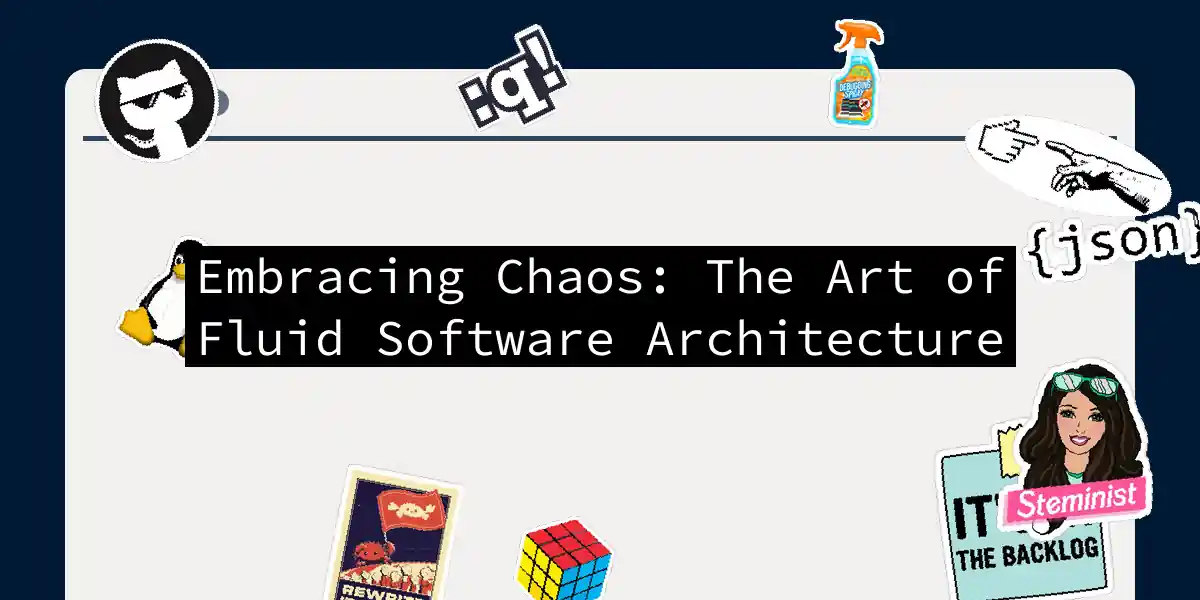Picture this: you’ve built a perfect SOLID castle with immaculate class hierarchies, dependency injections flowing like moats, and interfaces sharper than battlements. Then reality hits - the marketing team wants dragon-shaped turrets, accounting demands a dungeon-to-cloud migration, and UX insists the drawbridge must spin like a fidget spinner. Suddenly your fortress feels more like a prison. Welcome to modern software development, where the only constant is change, and architectural rigidity is the real technical debt.
Why Fluidity Beats Fortresses
Traditional architectural approaches often resemble medieval castles – impressive until you need indoor plumbing. The SOLID principles () provide excellent guardrails, but over-application creates brittle systems. Consider the Dependency Inversion Principle – while abstracting logger implementations prevents lock-in, abstracting business requirements creates complexity phantoms. Remember our good friend Liskov? Her substitution principle () ensures ducks can stand in for chickens, but what happens when the business suddenly needs emus? Enter fluid architecture – the software equivalent of transformable origami. Inspired by Microsoft’s Fluid Framework (), this approach follows two core tenets:
- Keep the server simple – Offload complexity to clients instead of centralizing merge logic
- Move logic to the client – Embed both application rules and data synchronization where they’re used
// Traditional rigid approach
class PaymentProcessor {
process(order: Order) {
// Complex validation & routing
}
}
// Fluid alternative
class PaymentHandler {
apply(op: PaymentOp) {
// Local operation applied immediately
this.applyLocal(op);
// Distributed to other clients
this.distribute(op);
}
}
The FLUID Principles Unbottled
Beyond Microsoft’s framework, we have the FLUID design principles () – the yin to SOLID’s yang:
| Principle | SOLID Counterpart | Fluid Implementation |
|---|---|---|
| Flexible | Open/Closed | Feature flags over inheritance |
| Locality | Single Responsibility | Domain-driven bounded contexts |
| Unambiguous | Liskov Substitution | Event sourcing with clear state transitions |
| Intuitive | Interface Segregation | Consumer-driven contract testing |
| Dependable | Dependency Inversion | Health checks with circuit breakers |
The magic happens when FLUID meets real-world entropy. Imagine a checkout system:
Notice how responsibilities flow to clients? When Client 2 updates payment status:
- Change propagates through lightweight ops ()
- Other clients merge changes locally
- Server acts as message router, not merge mediator ()
Building Your First Liquid System
Step 1: Start With Ambiguity
Embrace the “undefined”! A payment processing flow doesn’t need 45 states upfront. Begin with:
type PaymentState = "created" | "pending" | { failed: string } | "completed";
Leaving room for unknown failure modes beats over-engineering state machines.
Step 2: Distributed Data Structures
Implement conflict-free replicated data types (CRDTs) using libraries like Automerge:
// Collaborative cart implementation
const cart = new Automerge.Map();
cart.set("items", []);
Automerge.change(cart, doc => {
doc.items.push({ sku: "DRAGON-123", qty: 1 });
});
Step 3: The Fluid Container Pattern
Wrap domain logic in portable containers ():
When Rigidity Creeps Back In
Fluid architecture isn’t a free-for-all. Apply these guardrails:
- Explicit Dependencies Principle (): All required collaborators must be declared upfront
- Micro-boundaries: Split systems when communication patterns diverge
- Chaos Testing: Schedule weekly “requirement earthquakes” Remember my e-commerce project “BuyMore”? We implemented fluid pricing:
class PricingAdapter {
constructor(
inventory: InventoryService,
promos: PromotionService,
// Explicit dependencies prevent surprises
) {}
calculatePrice(item: Item) {
// Fluid logic: local calculation first
let price = inventory.getBasePrice(item);
// Remote checks only when needed
if (promos.hasActiveCampaigns()) {
price = promos.applyCampaigns(price);
}
return price;
}
}
The Art of Architectural Undefinition
Software isn’t architecture – it’s city planning for requirements that haven’t arrived yet. Like urban planners leaving green spaces for future development, leave intentional gaps:
- Schema-less zones: Use document stores for volatile domains
- Event horizons: Emit events for decisions you haven’t made yet
- Anti-corruption ponds: Isolate third-party integrations behind transform layers The most elegant solution I’ve seen? A travel booking system that stored undefined reservation states as:
{
"state": "pending",
"meta": {
"undefined_reason": "awaiting_airline_confirmation",
"possible_transitions": ["confirmed", "failed", "waitlisted"]
}
}
The Fluid Developer’s Mindset
Forget “fail fast” – embrace “learn constantly”. When requirements shift:
- Celebrate discovering the unknown early
- Measure architectural flexibility by change-cycle time
- Treat ambiguity as design material, not anxiety fuel As my team’s whiteboard proclaims: “A waterfall crashes down, SOLID blocks crumble, but fluid architecture? It fills the container you give it.” Now if you’ll excuse me, I need to refactor our payment system to accept cryptocurrency llamas – that’s a story for another article.
